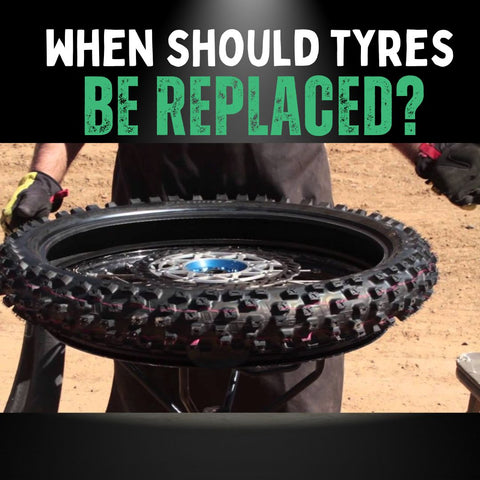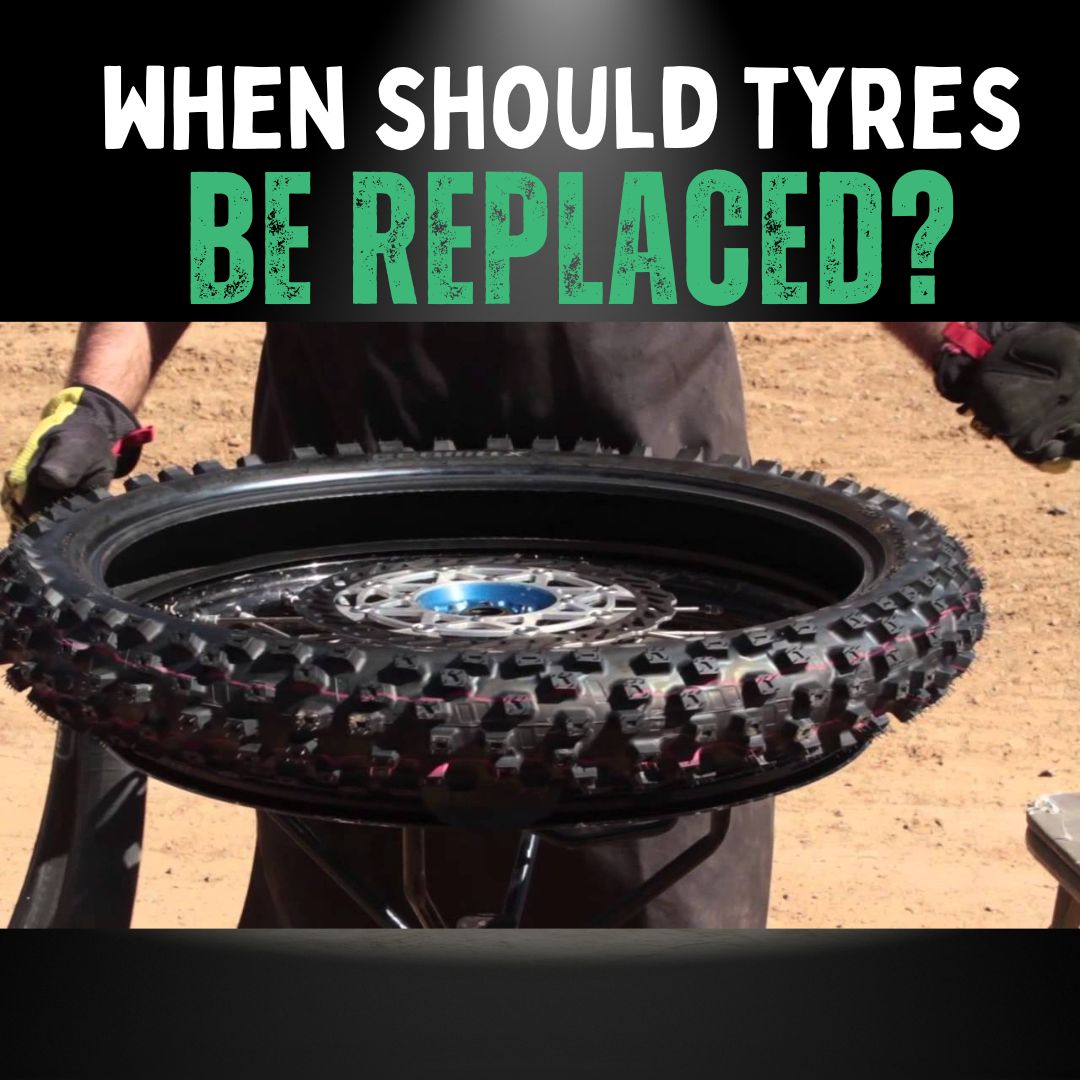
Updated: 25.4.25
As dirt bike enthusiasts, we live for the thrill of off-road trails and motocross tracks. That adrenaline rush comes with a responsibility: maintaining peak performance and safety — and tyres are at the core of both.
In this guide, we’ll answer the critical question every rider eventually faces: When should dirt bike tyres be replaced?
Quick Answer
Replace dirt bike tyres as soon as you spot significant tread wear, sidewall cracks, discoloration, or if they’re over five years old — even if they "look fine". When in doubt, get a professional inspection.
Key Signs It’s Time to Replace Dirt Bike Tyres
1. Tread Wear: The Silent Warning
- Missing or torn knobs
- Rounded or flattened tread blocks
- Shallow overall tread depth
Worn treads compromise traction and control, making rides dangerous, especially on unpredictable terrain.
2. Sidewall Cracking: A Red Flag
Cracks on the sidewall weaken your tyre's structural integrity — a major safety risk.
3. Discoloration: When Black Turns Grey
If your tyres are turning grey, it’s a sign the rubber is hardening. Aged tyres lose flexibility and grip — replace them!
4. Tyre Age: The Five-Year Rule
Even if tyres look fine, rubber degrades with time. If yours are over five years old, it's time to replace them. Check the manufacture date code on the sidewall.
How Riding Conditions Affect Tyre Wear
Terrain Matters
- Hard rocky trails = quicker tread destruction
- Soft sandy terrain = more even wear
Adjust your replacement timing based on your most frequent riding conditions.
Real-Life Examples
Stories from aggressive trail riders and rocky terrain explorers show that tyre lifespan can vary dramatically depending on your environment.
Tyre Pressure & Maintenance Tips
Maintain Proper Pressure
Correct tyre pressure extends tyre life. Both over-inflation and under-inflation cause premature wear.
Simple Maintenance Tips
- Clean tyres regularly
- Store the bike in a cool, dry place
- Inspect tyres after tough rides
Professional Inspection: Get a Second Opinion
If you’re unsure about tyre wear, a professional inspection can offer peace of mind and prevent on-trail disasters.
User Experiences: Lessons from Riders
- Replace tyres at the first sign of reduced grip.
- Don’t wait for complete failure — stay proactive.
- Adapt replacement timing based on terrain challenges.
How to Check Your Tyre Pressure (Step-by-Step)
- Let tyres cool before checking.
- Remove the valve stem cap.
- Press tyre pressure gauge firmly on the valve.
- Compare to recommended pressure in the manual.
- Inflate or deflate as needed.
- Replace the valve stem cap.
Common Causes of Tyre Wear
- Aggressive riding
- Incorrect pressure
- Age and storage conditions
- Terrain and maintenance habits
Choosing the Right Dirt Bike Tyres
- Terrain Fit: Hard, soft, or intermediate?
- Tread Pattern: Wide-spaced for mud, tight for trails.
- Bike Specs: Match wheel size and load rating.
- Professional Advice: Always helps!
Understanding Tyre Codes
- Tyre Size & Type: E.g., 120/90-18
- Manufacture Date: E.g., "0320" = 3rd week of 2020
- Speed Rating: E.g., "M" = 81 mph
- Construction Type: Radial (R), Bias (B)
Tips to Extend Tyre Life
- Clean tyres regularly
- Keep correct pressure
- Adjust your riding style
- Store away from sunlight and moisture
Conclusion
Tyres are your connection to the terrain. Stay proactive — recognise wear signs, maintain your tyres properly, and replace them when needed. Ride safer and enjoy your adventures to the fullest!
FAQs
Is it necessary to replace tyres based on age?
Yes. Tyres older than 5 years should be replaced regardless of how they look.
Can I use the same tyres across terrains?
Not recommended. Use tyres designed for the terrain to optimise performance and safety.
How often should I check tyre pressure?
Monthly — or before any major ride.
What visual signs show tyres need replacing?
Missing knobs, sidewall cracks, discoloration, or flattened tread patterns.
Get in Touch 🚀
Loved this guide? Dive into more adventures at RiiRoo.com!
Have questions? Tap our Live Chat — we're ready to help!






Share:
Choosing the Right Dirt Bike Tyres for Different Terrains
Mastering Dirt Bike Jumps: Techniques and Tips